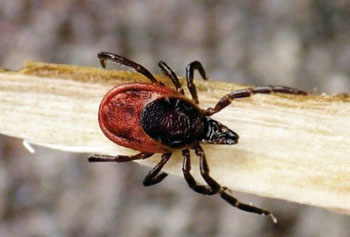Novel Goat Pathogen Infects Humans
By LabMedica International staff writers
Posted on 16 Apr 2015
Anaplasmosis is often associated with thrombocytopenia, leukopenia, and/or increased liver enzyme levels in patients with a history of tick exposure within the prior three weeks. Posted on 16 Apr 2015
Anaplasmosis can be severe and even life-threatening if untreated or initiation of antibiotic therapy is delayed in elderly and in immunocompromised patients, however in most patients anaplasmosis is a mild disease and case fatality rates are low.
Scientists at the Beijing Institute of Microbiology and Epidemiology (China) collected blood samples from patients with a history of tick bite in the preceding two months at a local hospital from May 1, to June 10, 2014. To detect the novel Anaplasma species they used nested polymerase chain reaction (PCR). They inoculated positive samples into cell cultures and characterized the isolated pathogen by morphological and phylogenetic analyses. They also tested serum antibodies by indirect immunofluorescence assay.
The team found 28 of 477 (6%) patients assessed were infected with the novel Anaplasma species according to PCR and sequencing. They isolated the pathogen in vitro from three patients. Phylogenetic analyses of several protein-gene combinations including, major surface protein-2 (msp2), and msp4, showed that the pathogen was distinct from all known Anaplasma species. The nucleotide sequences amplified from all positive samples were identical to each other, and to the corresponding sequences detected in goats.
The majority of patients had seroconversion or a four-fold increase in antibody titers. All 28 patients developed non-specific febrile manifestations, including fever in 23 (82%), headache in 14 (50%), malaise in 13 (46%), dizziness in nine (32%), myalgia in four (14%), and chills in four (14%). Additionally, ten (36%) of 28 patients had rash or eschar, eight (29%) had lymphadenopathy, eight (29%) had gastrointestinal symptoms, and three (11%) had stiff neck. Five patients were admitted to hospital because of severe disease. Six (35%) of 17 patients with data available had high hepatic aminotransferase concentrations.
The authors provisionally nominated the pathogen as "Anaplasma capra.” A similar pathogen Anaplasma ovis is found in sheep and goats and very rarely infects humans. The known vector of Anaplasma capra is the hard tick The study was published on March 29, 2015, in the journal Lancet Infectious Diseases.
Related Links:
Beijing Institute of Microbiology and Epidemiology















